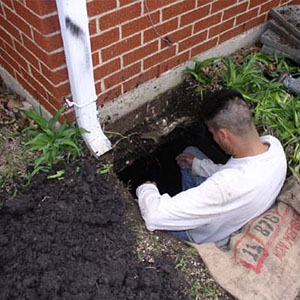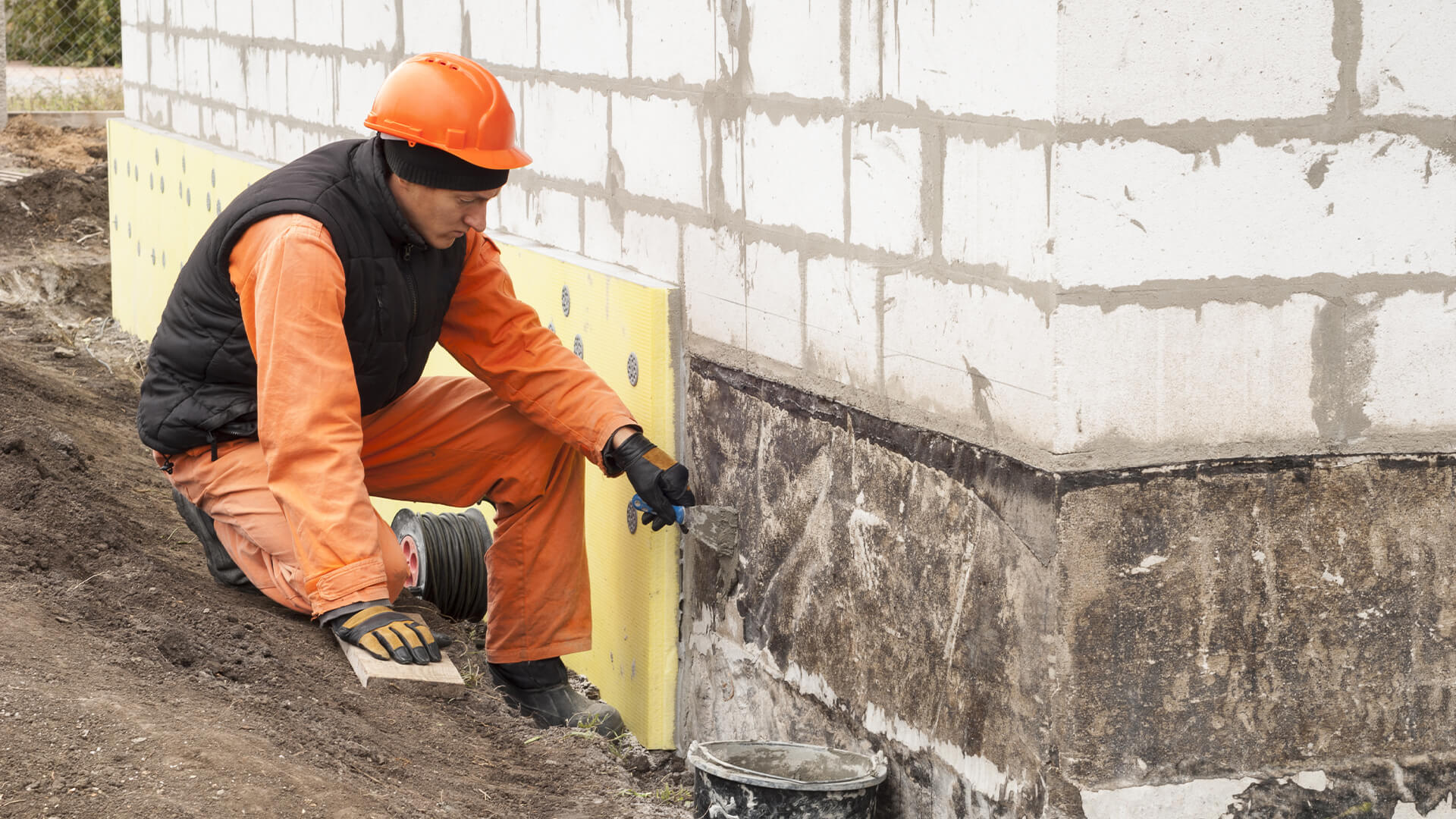Pier and Beam Foundation Repair Dallas: Tailored Solutions for Elevated Foundations
Wiki Article
Structure Fixing Techniques: A Detailed Introduction
Foundation Fixing Techniques: An Extensive ReviewFoundation concerns can create significant structural damage to structures, jeopardizing their stability and safety. Recognizing structure repair strategies is vital for property owners, designers, and professionals associated with building and upkeep jobs. This thorough review gives a detailed examination of various approaches used to resolve structure problems, making certain a strong and secure structure for any kind of framework.
The overview covers vital techniques such as piece jacking, pier and light beam reinforcement, cellar wall anchoring, dirt stabilization, and structure base. Each technique is clarified extensive, highlighting its purpose, performance, and application. Pier and Beam Foundation Repair Dallas. Furthermore, the review talks about aspects to consider when choosing the proper repair service approach, such as soil conditions, developing kind, and budgetary restrictions
Whether you are a house owner looking for to deal with structure problems or an expert in the building sector, this comprehensive summary acts as a beneficial source, providing vital understanding and understandings right into structure fixing techniques.
Slab Jacking
Slab jacking, frequently utilized as a trustworthy and regularly made use of approach, elevates sunken concrete pieces by infusing a maintaining product below, properly recovering the structure to its initial degree. This strategy is generally made use of in scenarios where the ground has actually cleared up or changed, triggering concrete slabs to sink or end up being uneven. Slab jacking is a cost-effective alternative to completely changing the concrete, as it resolves the origin cause of the problem and provides a long-lasting remedy.
One of the significant advantages of piece jacking is its minimally intrusive nature. The little holes pierced for the injection procedure can easily be covered, leaving no noticeable indicators of repair. Additionally, slab jacking can be completed quickly, commonly within a day, decreasing disturbance to the building proprietor. This method appropriates for a broad range of concrete structures, consisting of driveways, pathways, patio areas, and cellar floorings.
Pier and Light Beam Support
One more frequently employed technique in foundation repair service is pier and light beam support, which constructs upon the previous approach of slab jacking to supply additional structural assistance and security to the structure. This technique is especially helpful in areas with weak dirt problems or when the foundation has actually endured significant damage.Pier and beam support entails installing upright concrete or steel piers underneath the foundation to move the weight of the framework to deeper, more steady soil layers. These piers are purposefully positioned along the perimeter of the structure and at interior load-bearing walls to uniformly disperse the load and prevent additional negotiation.
To strengthen the light beams, extra steel or concrete assistances are included in strengthen and stabilize the existing beam of lights. This is done by connecting steel braces or beams to the existing beams and securing them with screws or other bolts. The reinforcement products are chosen based upon the specific demands of the structure and the extent of the damage.
Pier and light beam support not only provides instant assistance to the structure however additionally assists to stop future negotiation and architectural damage. FCS Foundation Repair Dallas. By redistributing the load and moving it to more powerful soil layers, this technique makes certain the lasting stability and integrity of the structure
Basement Wall Surface Anchoring
Cellar wall anchoring is a crucial method utilized in foundation repair work to improve the security and structural honesty of the structure, particularly in areas prone to soil activity and basement wall surface failure. When the soil around a structure experiences excessive dampness or changes as a result of geological variables, it can apply considerable stress on the cellar wall surfaces, triggering them to split, bow, or perhaps collapse. This can bring about serious architectural problems and jeopardize the safety of the whole structure.Cellar wall anchoring includes installing specialized anchors or helical tiebacks into the ground beside the structure wall surfaces. These anchors are designed to pass through deep into secure dirt or bedrock, developing a solid link in between the ground and the foundation. By distributing the lots of the structure evenly and standing up to the lateral pressures put in by the soil, cellar wall securing provides extra assistance and avoids more activity or damage of the wall surfaces.
There are various sorts of cellar wall anchoring systems readily available, consisting of steel wall supports, helical tiebacks, and carbon fiber bands. The selection of system depends on factors such as the seriousness of the wall motion, soil problems, and the specific demands of the structure. Specialist structure repair work specialists assess these factors and recommend the most suitable securing solution for every distinct circumstance.
Soil Stabilization
To deal with the challenges of dirt movement and guarantee the stability of structures, dirt stabilization methods are utilized in structure fixing. Soil stabilization describes the procedure of enhancing the residential properties of the soil to improve its load-bearing capability and lower its vulnerability to movement. There are several methods used for soil stabilization, each tailored to the particular attributes of the dirt and the demands of the structure.
Mechanical stabilization is another commonly made use of approach that involves the physical adjustment of the dirt. This technique includes techniques such as compaction, which raises the density of the soil, and dirt substitute, which entails removing weak soil and changing it with even more secure materials.
Additionally, soil stablizing might additionally involve the use of geosynthetic products like geogrids, geocells, or geotextiles. These products are positioned within the soil to reinforce it and distribute the tons much more uniformly, reducing the risk of settlement or heave.
Foundation Base
How can foundation base official site properly resolve the challenges of soil movement and ensure the stability of frameworks? Structure underpinning is a technique used see this website to strengthen and stabilize existing structures that have actually been impacted by soil motion. This technique includes extending the deepness or breadth of the structure to a much more steady soil layer or rearranging the lots throughout a larger area, thereby boosting its load-bearing ability.There are a number of types of foundation underpinning techniques frequently made use of in the sector. One technique is mass concrete foundation, where new concrete is put underneath the existing foundation to increase its deepness and stability. Another strategy is beam of light and base underpinning, which entails creating strengthened concrete beams under the existing structure, transferring the lots to deeper, extra steady soils.
Helical heap support is additionally typically used. It entails setting up helical heaps into the ground beneath the structure, which offer additional assistance and stability. These heaps are screwed into the soil and can be made use of to move the load of the framework to even more proficient dirt layers.
Final Thought
In verdict, foundation repair strategies play an important duty in preserving the architectural integrity of structures. Slab jacking, pier and beam of light support, basement wall surface anchoring, soil stablizing, and foundation base are all reliable techniques used to attend to foundation problems. By implementing these strategies, homeowner can guarantee the security and safety of their frameworks for years ahead.Basement wall anchoring is an essential method made use of in foundation repair service to enhance the stability and architectural integrity of the structure, particularly in locations susceptible to soil motion and cellar wall failing.To address the difficulties of dirt activity and ensure the security of foundations, dirt stabilization techniques are utilized in foundation fixing. There are several techniques utilized for dirt stabilization, each customized to the details qualities of the dirt and the demands wikipedia reference of the structure.
Structure underpinning is a technique used to strengthen and stabilize existing foundations that have been affected by soil activity. Piece jacking, pier and light beam support, cellar wall anchoring, soil stablizing, and structure support are all effective methods used to resolve foundation concerns.
Report this wiki page